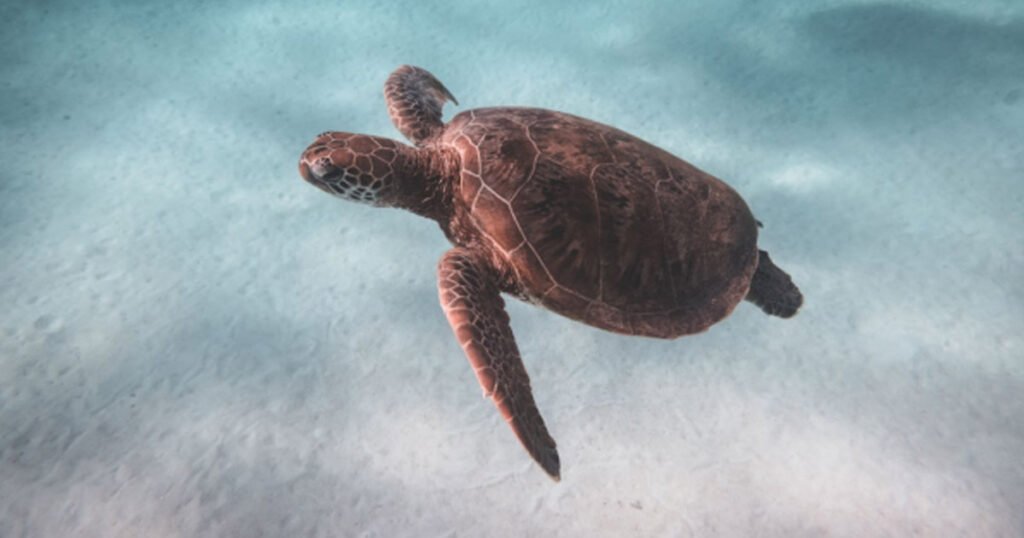Turtles are wonderful creatures that have been around for a very long time. We are very interested in them because of how strange they look, with their hard shells and slow, deliberate moves. But have you ever thought about whether are turtles warm blooded? This detailed guide will go into detail about the answer to this question and the fascinating world of turtles.
Table of Contents
An Overview of Turtle Biology

Turtles are interesting animals with unique bodies. The shell of a turtle is one of the things that makes them stand out. It protects them from being eaten by other animals.
The top shell is called the carapace, and the bottom shell is called the plastron. Turtles can’t come out of their shells, despite what most people think. Their shells are fused to their backbone and ribs and are part of their body.
Turtles can hide their heads and limbs inside their shells to keep them safe, which is another interesting fact about turtle biology. Turtles can hide inside their shells when they feel threatened by this flexible feature, which keeps them safe.
Their metabolism is also slow, so they don’t have to eat or move as fast as some other animals do. Turtles tend to live long lives because they move slowly. Some species have been known to live for decades or even over a century!
Turtles have evolved in amazing ways that have helped them stay alive for millions of years. They are one of the most interesting animals because of the way their bodies work.
How Turtles Regulate Their Temperature
Turtles are very good at controlling their body temperature. They do a few smart things to stay at the right temperature. They depend on their surroundings to warm or cool them down because they have cold blood. Soaking up the sun is one of their favorite things to do.
A turtle might be lying on a rock or log, soaking up the sun. This helps them get warmer, which gives them the energy to swim, hunt, or just enjoy the day.
What if it gets too hot? Turtles also know how to do that! To cool off, they’ll go to the shade and find a spot under a bush or in the water. This keeps them from getting too hot and makes them comfortable even on very hot days.
A turtle has another cool trick they can use when it’s time to cool off. They can go for a swim! Turtles can cool off and get away from the heat by swimming in cool streams, ponds, or seas.
So, turtles know how to keep their bodies at the right temperature so they’re always comfortable, whether they’re lying in the sun, looking for shade, or going for a swim.
Are Turtles Warm Blooded?

No, turtles are not warm-blooded. Instead, they are cold-blooded, which means that the temperature affects their body temperature. Warm-blooded animals, like humans and birds, can control their body temperature, but turtles can’t.
They instead depend on outside heat sources, like sunlight, to keep themselves warm. This is why turtles often lay out in the sun to keep their bodies at the right temperature. Even though turtles don’t have warm blood like humans, they have amazing adaptations that help them do well in a wide range of conditions.
Are Turtles Warm Or Cold Blooded?
Turtles don’t have the power to keep their bodies warm like humans do. Instead, they get warm from things like the sun or warm air outside. If a turtle is too cold, it might go somewhere hot to warm up. It can move to a cool spot in the shade if it gets too hot.
Turtles stay at the right temperature this way to stay healthy and busy. Turtles can survive in a variety of settings because they have cold blood. They can swim in cool water or lay out on warm beaches. But turtles have some cool ways to stay warm even though their blood isn’t as warm as ours.
Are Green Sea Turtles Warm Blooded Or Cold Blooded?

Like other reptiles, green sea turtles have cold blood, which is also called ectothermic. To put it another way, they get their body warmth from outside sources. To get more active and raise their body temperature, they lay out in the sun.
When they need to cool down, they go to water or cooler places. Green sea turtles are cold-blooded, despite their name. They have adapted to living in the water, where they can use the sun’s heat to their advantage.
Are Leatherback Sea Turtles Warm Blooded?
Like other reptiles, leatherback sea turtles are ectothermic, which means they don’t need heat to stay alive. They get heat from outside sources to keep their bodies at the right temperature.
Leatherback sea turtles can make some heat inside their bodies through their metabolism, but the sun or the water is what really keeps their body temperature in the right range for their biological needs. Leatherback sea turtles are still cold-blooded, even though they are very big and have special traits that help them survive.
Are Freshwater Turtles Warm Blooded?
All turtles, including freshwater turtles, have cold blood, which is also called ectothermic. They get heat from outside sources to keep their bodies at the right temperature.
They can make some heat inside their bodies through metabolism, but the sun or the water is what really keeps their body temperature in the right range for their biological processes. So, yes, pond turtles are cold-blooded animals that have adapted to living in water where they can get warmth from the sun.
Climate Change Impacts Turtles

Changes in the climate have big effects on turtles and the places they live. Rising temperatures can change where turtles nest, which can affect how many babies they have.
For instance, warmer sand can change the ratio of male to female hatchlings, which can cause population problems. Changes in the way rain falls can also affect nesting areas, causing flooding or droughts that make nesting seasons shorter or longer.
Sea level rise can damage beaches and take away turtle nesting places, which is bad for turtles that lay their eggs there. Stronger storms can also damage eggs and make it hard for birds to nest. Ocean currents and temperatures can change where sea turtles can find food, which can affect their ability to stay alive and move from one place to another.
Climate change can also make other problems that turtles face worse, like losing their homes, pollution, and being eaten. Overall, climate change is causing a lot of problems for turtle species around the world. This shows how important it is to protect these beautiful animals and lessen the effects of climate change.
Can Turtles Control Body Temperature?
Animals with warm bodies, like humans and birds, can control their body temperature from the inside out. Turtles, on the other hand, can’t. Instead, they get heat from outside sources to keep their bodies at the right temperature. In other words, their body temperature changes as their surroundings do.
Turtles keep their bodies at the right temperature in several ways. For instance, they lay out in the sun to get warm and then move to the shade or the water to cool off. Turtles can keep their bodies at a comfortable temperature by moving around in their surroundings. In contrast, they can’t keep their body temperature steady like warm-blooded animals can. They are instead called cold-blooded (ectothermic) animals.
Read More: Why Are Turtles Slow: What You Need To Know
Conclusion
Are turtles warm blooded? Turtles and other animals can’t control their body temperatures, so if they stay in very hot or very cold places, bad things could happen. They could get sick if they stay out in the cold or the heat for too long, for example.
